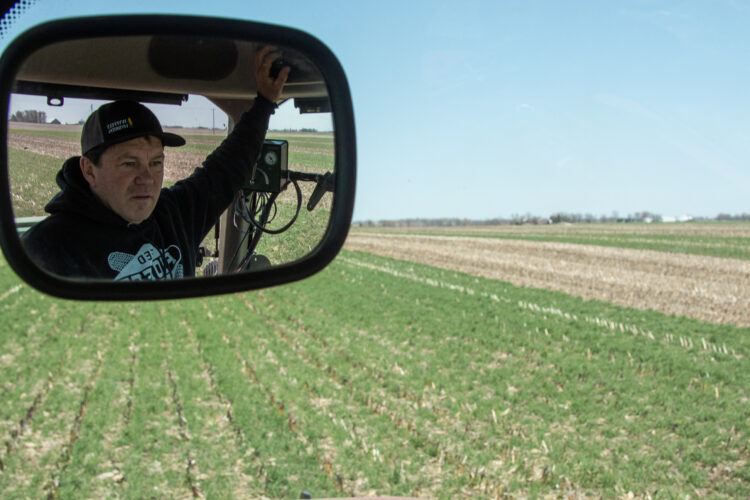
By Dan Looker, IAWA contributor
WASHINGTON CO., Iowa (IAWA) – In southeast Iowa, sixth-generation farmer Brian Hora has seen great improvements in soil health and input savings after starting no-till in 1978 and cover crops in 2013.
Weed suppression from planting into growing cereal rye, a cover crop, has eliminated the need for residual herbicides on Hora’s farm.
“Weed control is a big benefit. We’ve found out that really works,” he said. “Our applied nitrogen rates, we’ve been able to back them off.”
The soil itself provides evidence of these practices’ effectiveness. Hora has measured temperatures in exposed soil in his strip till corn – the only part of the field not protected by cover crops – and under terminated 8-inch rye cover.
“It’s about a 40-degree difference,” he said, noting that some herbicide-resistant weeds, like waterhemp, prefer warmer soil. “If we keep the soil surface cool, we have way less waterhemp.”
Over the past 10 years on the Hora farm, soil organic matter has risen from about 3.5% to 5%, the clay knobs on hillsides are turning darker, and the low, poorly-drained spots have better water infiltration.
“The soil erosion has pretty much stopped,” Hora said.
Hora and his son, Mitchell, try to avoid any soil disturbance on their farm in order to protect the soil’s biology. That nurturing approach is paying dividends.
“It’s not about producing high yields year after year,” Hora said. “It’s about increased profitability.”
Published on Nov. 30, 2022
